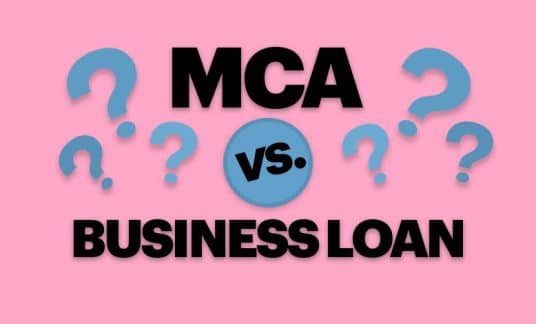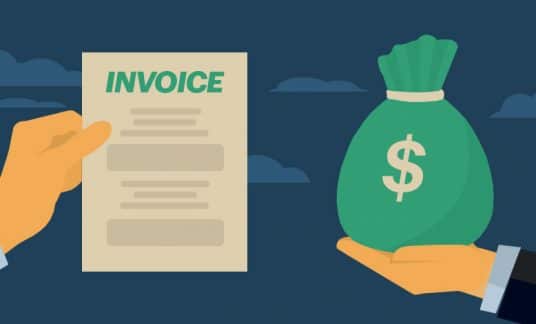Building a resilient supply chain is crucial to the success of your business. There are ways to improve supplier relationship management. Six of them come to mind.
Yes, there are many things you can do to ensure your supply chain operates without disruption. Some things are a bit out of your control, though. For the most part, your suppliers will be operating on their own terms — which may or may not be optimal for your operations.
Building strong business relationships between your business and your suppliers is essential to creating a resilient and effective supply chain. Learn why taking a strategic approach to supplier relationship management has become more important than ever before.
What is Supplier Relationship Management?
Supplier relationship management (SRM) is the act of taking a systematic, strategic approach to working with suppliers to create optimal outcomes for both involved parties.
To be sure, it’s a pretty hot topic by today’s standards. As reported in a Global Supplier Relationship Management Software Market research report, the SRM industry has seen steadily increasing growth in the past year — and will likely continue to rise at a similar rate throughout 2026.
The main idea behind SRM is to look beyond the surface-level, transactional relationship you have with your suppliers — and to instead think of the overarching value these partners bring to your business.
In short, SRM is about knowing how to figure out which of your potential suppliers is right for your business both now and in the future.
This involves:
- Identifying suppliers whose business and organizational goals align with yours
- Developing a clear and strategic plan for deriving value from your supplier relationships
- Continuously working to improve your supplier relationships to create even more value
Why SRM Is Worth It
While strategic SRM does take a bit of effort, the benefits far outweigh the costs.
- Optimized Processes: SRM often involves helping suppliers modify their processes based on what works for your specific situation. The stronger your supplier relationships, the easier it will be to streamline these cooperative processes.
- Decreased Cost and Wasted Resources: Less operational friction means fewer resources used to accomplish your goals. It also means fewer mistakes throughout the supply chain — making for more efficient resource usage, as well.
- Improved Financial Trust: As you continue to strengthen your relationships and deliver more value to your suppliers, you’ll inevitably become one of their most trusted customers. This, in turn, will likely lead to some account-specific benefits, such as better payment terms, better pricing on bulk orders, and more.
- Flexibility: SRM allows for increased visibility of supply chain processes and better communication with your suppliers. This, in turn, allows your team to stay in the know — and to quickly act on any issues that may arise along the supply chain.
- A Future-Proof Supply Chain: SRM focuses on building ever stronger, ever more valuable relationships with suppliers as time goes on. This means less time and energy spent looking for new suppliers as your needs evolve — and all but guarantees your operations will continue on uninterrupted over time.
Is it possible to experience these benefits without an intentional, strategic approach to supplier relationship management?
Sure, but it isn’t likely.
A strategic approach essentially guarantees that both you and your suppliers will continue to benefit from your ever-growing partnership.

6 Key Ways to Improve Your Supplier Relationships
With that in mind, let’s take a look at six things you can do to improve your supplier relationships, and your overall approach to supplier relationship management.
These are big-picture strategies to improve your supplier relationships and help get your SRM efforts up and running.
1. Align Your Business and Organizational Goals From the Start
When forging new relationships with suppliers, it’s important to understand what their goals for the future are.
Reason being: The supplier that works for your business today may not meet your business needs tomorrow. If you outgrow your supplier in any way, you’ll basically have to start all over with a new company at some point down the road.
So, in the interest of starting long-lasting, mutually beneficial relationships with your suppliers, you need to know how your company will fit into their future plans.
First, consider your own goals for the future. Think about how you plan on expanding your business — and how your supplier-related needs will change moving forward.
On the surface, you definitely want to know that your suppliers will be able to continue providing for your needs in the future.
But you should be focused on how you’ll be able to deliver more value to your suppliers as your company grows.
It may be as simple as providing additional revenue through higher monthly orders. Or your expansion into a new geographic location might enable the same for your suppliers. Similarly, expanding your product catalog may mean more business for your supplier, as well.
In any case, the idea is to focus on your supplier’s needs from the get-go. This will not only help both parties stay aligned moving forward, but will allow your suppliers to understand how vital your partnership is to their ongoing success.
2. Develop Clear Terms
In addition to this big-picture alignment, you need to create clear and comprehensive terms for the business agreements you make with your suppliers.
(A misunderstanding or miscommunication on this end can be disastrous for both companies — and can sometimes cause your supplier relationships to fall apart completely.)
It’s crucial, then, that your agreements spell out both parties’ expectations in terms of:
- Order numbers
- Pricing
- Payment terms
- Communication protocol
- Contractual terms (cancellation, renegotiation, etc.)
- Any other specifics that need to be hammered out before you get to business
This sets expectations in stone for both parties while defining the steps to take while completing certain processes. This in itself will lead to increased efficiency and the like.
Moreover, getting all this clear from the start means less time spent managing said processes on the fly. With your transactional processes running like clockwork, both parties will have more time and resources to invest in strengthening the relationship altogether.
3. Build Trust Through Reliable and Convenient Payments
This is pretty straightforward: Paying your suppliers on time is one of the most important things you can do to earn their trust.
(Conversely, missing a payment — or multiple payments — will be incredibly damaging to your supplier relationships.)
For starters, you need to ensure that your suppliers receive their payments as expected well ahead of the expected payment date. More than just maintaining trust, paying early will add a level of convenience to the process for your suppliers — making them even more likely to trust you moving forward.
The idea here is to quite literally put your money where your mouth is as for your plans to forge a strong relationship with your suppliers. Before you can put your ultimate plans for the relationship into action, you need to prove to your suppliers the relationship is worth investing in.

4. Facilitate Open and Consistent Communication
Communication between your team and your suppliers isn’t just important; it’s vital to keep the relationship moving in the right direction.
This is another area where a strategic and intentional approach is critical. When forging partnerships with your suppliers, you’ll want to define:
- What channel or channels will be used to communicate with them
- Who will be involved at different stages of the process, on both ends
- What information is to be communicated at different moments
The goal is to move past communicating with suppliers only when there’s an issue and instead build intentional communication directly into your processes.
(Of course, when issues do arise, you want both parties to be able to communicate as effectively as possible.)
Beyond day-to-day communications, it’s crucial to regularly engage with suppliers to review performance data and the like. Maintaining open lines of communication will make it easier for both teams to take collaborative action based on this data. This can lead to major improvements on both ends.
Speaking of that…
5. Continually Uncover Ways to Create Value
Constantly find new ways to create value for you and your suppliers. That way they’ll have every reason to continue doing business with you.
(And, ideally, to continue treating your account most favorably.)
There are more than a few ways to make this happen.
For one thing, there will always be something to do to:
- Further streamline processes
- Supercharge team efforts
- Create better outcomes for both your team and your suppliers
As you analyze your internal processes (e.g., intake, warehousing, etc.), you’ll invariably find improvements you could make that could benefit your suppliers. For example, a change in your approach to inventory management might leave you with additional storage space. That means you could potentially increase your order size moving forward.
As we mentioned earlier, you should also think beyond these on-the-ground, transactional processes — and think about the many other ways you and your supply can benefit from each other’s efforts.
A few examples:
- A mutual referral program
- Co-sponsored events and initiatives
- Exclusive, co-branded products
(This goes back to the importance of aligning with your suppliers from the get-go. The more you have in common in terms of business and organizational goals, the more opportunities you’ll have, here.)
To this end, you’ll need to think critically and creatively about the role your relationship plays in both your and your supplier’s overall operations. This will help you identify other areas in which either party might be able to play a stronger part to create an optimal outcome for all involved.
6. Invest in SRM Technology
As with all other areas of running a business, the use of technology is essential for proper supplier relationship management.
Thankfully, there are a number of SRM tools available, such as SAP Ariba, Specright, and Oracle Supply Chain Management.
The key functions of these tools cover much of what we’ve discussed, including:
- Optimize supply chain workflows
- Automate ordering and payments
- Communicate and collaborate with stakeholders
- Goal setting, planning, and performance assessment powered by artificial intelligence
The right SRM tool will help you identify the specific ways you can get more value out of the relationships you have with your suppliers — and how to deliver more value to them, in turn.
Supercharge Your Supply Chain With Supplier Relationship Management
Maintaining close supplier-customer relationships is key to keeping your supply chain running as smoothly as possible.
What’s more, your supplier partnerships can lead to major opportunities for your business — but only if the conditions are right for both parties.
It’s important to start seeing supplier relationship management as the valuable investment it is — and not something to be put on the backburner.










